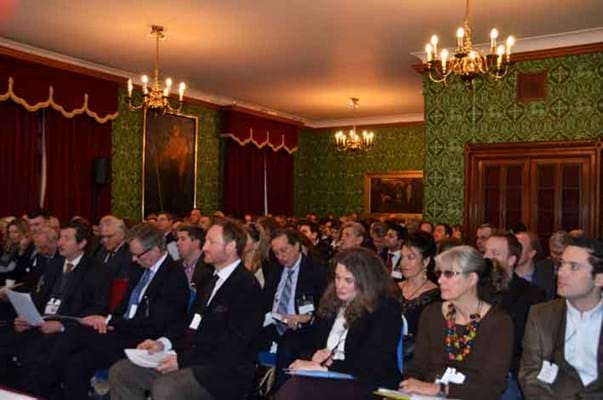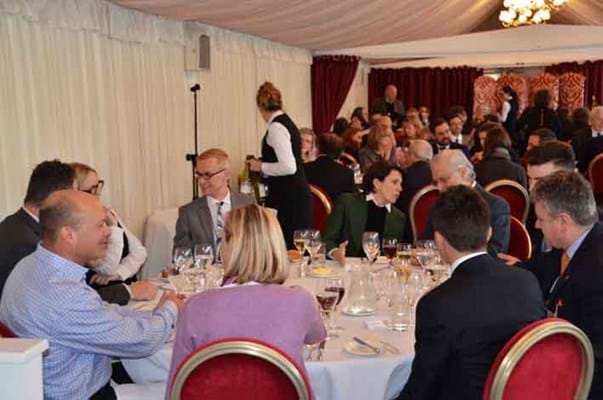Last week I got it in the neck from a dealer who was very upset about a letter we published from someone roundly condemning the negotiation skills and pricing of an unnamed gallery.
The letter questioned how a price quoted for a painting could be cut so substantially in next to no time by the gallery when he challenged them over it.
What did this tell us about the gallery and the validity of the original price quoted? he demanded.
Our inclusion of it on the letters page was an outrage in the eyes of the complainant, because he felt we were condoning what he saw as an extremely unfair view of the trade that went as far as questioning dealers' honesty and probity.
I'm glad to say that, after some discussion - which included the point that correspondents' views were not necessarily our own and that one of the purposes of the letters page was to stimulate debate - the conversation ended on friendly terms, but the passion with which the complainant had spoken reminded me once again that there are certain taboos in our industry which one raises at one's peril.
This does not mean that they should not be discussed, however, a point driven strongly home the day before that phone call at what I am delighted to laud as the best LAPADA annual conference I have ever attended.
Undercover Research
In fact, the very subject of my caller's complaint, price negotiation, was at the heart of the first presentation of the day, given by training consultant Chris Merrington in the Cholmondeley Room at the House of Lords.
Improve your profitability - how much are your negotiation mistakes costing you? focused firmly on the issue of trust. Unveiling the results of a snap survey he had undertaken 'undercover' at the LAPADA Berkeley Square fair and the recent Olympia fair, Mr Merrington gave half a dozen examples of where dealers had cut prices by between 10% and 22% from the original quote they had given him, in some cases only a matter of seconds later and with little or no prompting from him.
While this may be a traditional way of negotiating terms at fairs, it sends out the wrong message to your potential buyer, he advised. What would you think if someone offering a flat for sale at £250,000 immediately accepted your offer of £200,000? he asked delegates.
"Generosity in these circumstances is seen as weakness, not as a good deal," he said. And certainly some delegates agreed, saying that as the buyer under such circumstances they would be asking themselves what was wrong with the flat, had it been overpriced, could they have bought it cheaper and just how trustworthy was the seller?
Mr Merrington had been impressed by one dealer he had spoken to on his tour of the fairs. They had refused to budge on price, telling him that they did business all over the world, this was their specialist field and what they were asking was a fair price. "Qualify, qualify, qualify," he said. "Do it with confidence and you will come across as believable and trustworthy."
He did not advocate abandoning negotiated discounts altogether, but warned that rushing to close deals did business people no favours.
Price is important but it is only one factor in the buyer's decision making, he explained. Expertise, listening to the customer and building trust have to be in the mix too.
"Be prepared to lose sales to increase profits," he added. "Profit is a reflection of value for your customers. Negotiated money is the fastest money you will ever make or lose."
Transparency must be at the heart of deals, delegates were told. "Have a good reason for the price you are asking, aim realistically high, know when to walk away and base your price on the value to the customer rather than the cost to you."
Anticipating challenges to the price being asked and being prepared to say no were also important, he said, and if you do reduce the price, do so in small increments.
This was undoubtedly a brave session for LAPADA to have staged, but the lively involvement of the 120 or so delegates packed into the room showed that Sarah Percy-Davis and her team had chosen well.
If Transparency was the buzzword of the first session, Technology was the byword for the rest of the day.
ATG Editor-in-Chief Mark Bridge got the ball rolling with a brief introduction to the basics, advising delegates on cutting through jargon and giving a potted guide to hardware, software and social media, including a useful rundown on the differing profiles and usefulness of Facebook, Linked In and Twitter, as well as image, video and blog hosts flickr, YouTube and tumblr.
Jill Perry, director of the Decorative Collective, followed with an introduction to the range of online portals for dealers, such as Antiques Atlas, Antiques.co.uk, the Decorative Collective, The Hoard and Sellingantiques.co.uk
This was extremely useful as it gave a breakdown of how many dealers used each portal, what disciplines they tended to specialise in, who the sites target as buyers, the volume and range of stock available, how the sites are marketed and also the costs of membership and uploads. Importantly, all of the portals appear on the first page of Google.
Jill Perry's key pieces of advice?
Join more than one portal for better exposure and answer enquiries immediately, especially as they may be from countries in different time zones, such as the United States; any delay could mean the enquirer not seeing a response for more than day and losing interest as a result.
Consumer Patterns
Victor Benady, Head of Social Media for Huntsworth, the PR and Communications group run by LAPADA chairman Lord Chadlington (another consummate performance as chairman of the conference), revealed that 2013 was a watershed in consumer spending terms, with a shift in buying power away from the Baby Boomers to what he called the Millennials, those born from the 1970s onwards. This is important because of their outlook on society and spending, views on privacy and use of the internet and social media, he explained.
Engaging them as customers will depend on Education (providing rich content online in context), Aspiration (positioning yourself as a cultural tastemaker and a source of "life-enhancing" goods and services) and Inspiration (telling a great story and bringing your audience into it).
Mark Hill, known for his TV programmes and books, has recently started dealing and takes his online activity seriously. A regular blogger and tweeter, he seems a long way ahead of many others in our industry when it comes to understanding how to exploit a properly integrated online interface for raising one's profile and doing business.
He's also a very good speaker.
His pithy advice on website clarity - "Say who you are and what you do immediately" - was authoritative and to the point.
He went on: make sure people know how to contact you; spend well on images; label items properly, giving size and price, for instance; only use video if you can do it well; create unusual blogs; adopt a descriptive but brief name for your website; harvest as much rich data as you can, such as email addresses; and let that database of contacts know what you are doing on a regular basis.
Most of all, tie all your channels of communication together: feed your website from Twitter and Facebook, and supply each with content from the other.
He also underscored the message on price transparency delivered by previous speakers: when it comes to the Millennials, if you don't put a clear price on items you are selling online, they will simply go elsewhere.
Social Media
Keren Lerner runs Top Left Design, a Soho-based company offering social media training.
What a refreshing and reassuring approach she takes! For those daunted by everything from blogging to linking in, the words "There are only seven things you really need to know about Twitter" were manna from Heaven.
Her briefing, the last before the lunch break, warned us against delegating social media to interns before mastering it ourselves. They may know technology, but they do not have our expertise or knowledge when it comes to dealing with customers and the public.
Linked In is one of the best sources of contacts and business. Keep your profile fresh, write it in the first person and update it with information that brings out more of your personality. All this attracts more of the right sort of attention.
Blogging is what powers your website and can drive more traffic to it, and there is all sorts of software, such as Buffer, that smooths the path and reduces maintenance demands.
Keren is offering cut-price training packages to LAPADA members until the end of May. I'm booking her.
Numbers Game
All this, and we had not yet arrived at the keynote speaker for the day, David Rosenblatt, who swept in from New York as the new chief executive of online luxury goods portal 1st Dibs.
On the board of Twitter and recently arrived at 1st Dibs having made a fortune for himself and others via Group Commerce Inc, the ecommerce go-to firm for publishers like the New York Times, if there is anyone who has the keys to the city when it comes to making money via the internet it must be him.
Delivering a slew of extraordinary statistics - $650m of sales in 2012, 29% of 1st Dibs dealers making a third of all sales online, etc - he set out a seven-point code for his future vision of 1st Dibs success, which ran from making inventory easy to find and easy to understand through building trust to practicalities such as a reliable payment methods, a comprehensive shipping service and dispute resolution.
He was calm and confident when it came to answering the inevitable torrent of questions, and his audience did not give him an easy time of it.
How do you know that buyers are going to be looking at your desk when there are 400 others on the site? asked Lennox Cato.
It's a numbers game, came the reply. Put in the context of 700,000 potential buyers on 1st Dibs - a figure growing at a rate of 10% a month - 400 didn't seem that much competition, argued David Rosenblatt.
He, too, stressed the importance of trust and transparency. When asked what predicts success, he replied: "Mindset. A willingness to embrace transparency, which means being willing and able to show prices. The internet rewards transparency."
Internet Dealing
Carmine Bruno, formerly managing director of Online Galleries and UK MD of 1st Dibs since the recent takeover, rounded off the formal sessions with a bullet-point lesson in how to be successful as a dealer via the internet.
Content, images, marketing and being proactive all provided headings that drove home, once again, the message on clarity, detail, transparency and communication. Preparation, measuring your activity through Google analytics and keeping stock fresh and updated all the time are also key, he advised.
In all then, I can't think of a more useful six or seven hours spent at a public forum.
The LAPADA conference aimed to set out a vision of the dealer of tomorrow. I expect that not all of what delegates heard would have been to their taste, but the consistency of message throughout from a first-class set of speakers who are all experts in their own fields is one that only the foolhardy would ignore.
As I said higher up this piece, Sarah Percy-Davis and her team, together with the board of LAPADA, deserve our thanks and congratulations for an excellent day.
They also deserve our praise for sticking their heads above the parapet and challenging traditions that may prove very hard to abandon, even if our heads are telling our hearts that we should do so.








